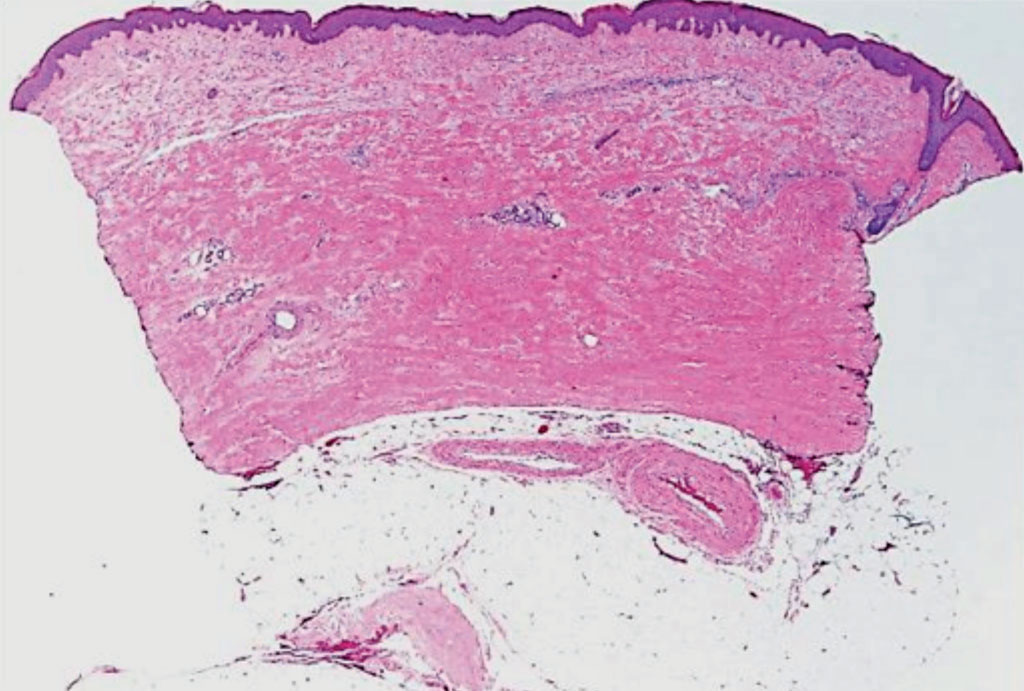Gene Activity Predicts Progression of Autoimmune Disease
By LabMedica International staff writers
Posted on 04 Jan 2017
A new diagnostic tool has been designed for a rare and deadly autoimmune disease called systemic sclerosis that affects the skin and internal organs and the disease affects about 100,000 people in the USA.Posted on 04 Jan 2017
The cause of systemic sclerosis (SSc) is unknown, and there are no drugs approved for treating it. Many patients are given drugs that are approved for use in other diseases, but each drug is clinically effective in only a fraction of patients. To find out if a patient is responding to treatment, clinicians use a test called the modified Rodnan skin score (mRSS), in which a doctor pinches the skin to see how thick it is.

Image: A histopathology of a skin-punch biopsy specimen in a patient with systemic sclerosis (Photo courtesy of Dr. Soumya Chatterjee, MD, MS, FRCP).
Scientists at the Stanford University School of Medicine (CA, USA) and six other institutions performed an integrated, multicohort analysis of SSc transcriptome data across seven datasets from six centers composed of 515 samples. Using 158 skin samples from SSc patients and healthy controls recruited at two centers as a discovery cohort, they identified a 415-gene expression signature specific for SSc, and validated its ability to distinguish SSc patients from healthy controls in an additional 357 skin samples from five independent cohorts.
The investigators defined the SSc skin severity score (4S). In every SSc cohort of skin biopsy samples analyzed in the study, 4S correlated significantly with mRSS, allowing objective quantification of SSc disease severity. Using transcriptome data from the largest longitudinal trial of SSc patients to date, they showed that 4S allowed them to objectively monitor individual SSc patients over time. The 4S test applied to the preexisting set of patient data could distinguish patients who were improving from those who were not 12 months after their treatment began. In contrast, the doctors' skin pinch test from the same set of data took 24 months to identify, which patients were improving. The study also uncovered a gene-activity signal suggesting the involvement of epidermal growth factor receptors in the disease.
Purvesh Khatri, PhD, assistant professor of medicine and a senior author of the study, “The data for all the healthy skin fell within one bubble, while all the data for the scleroderma patients fell within another and what was really cool was that we could predict on an individual level which patients would get better or worse.” The study was published on December 22, 2016, in the journal JCI Insight.
Related Links:
Stanford University School of Medicine













